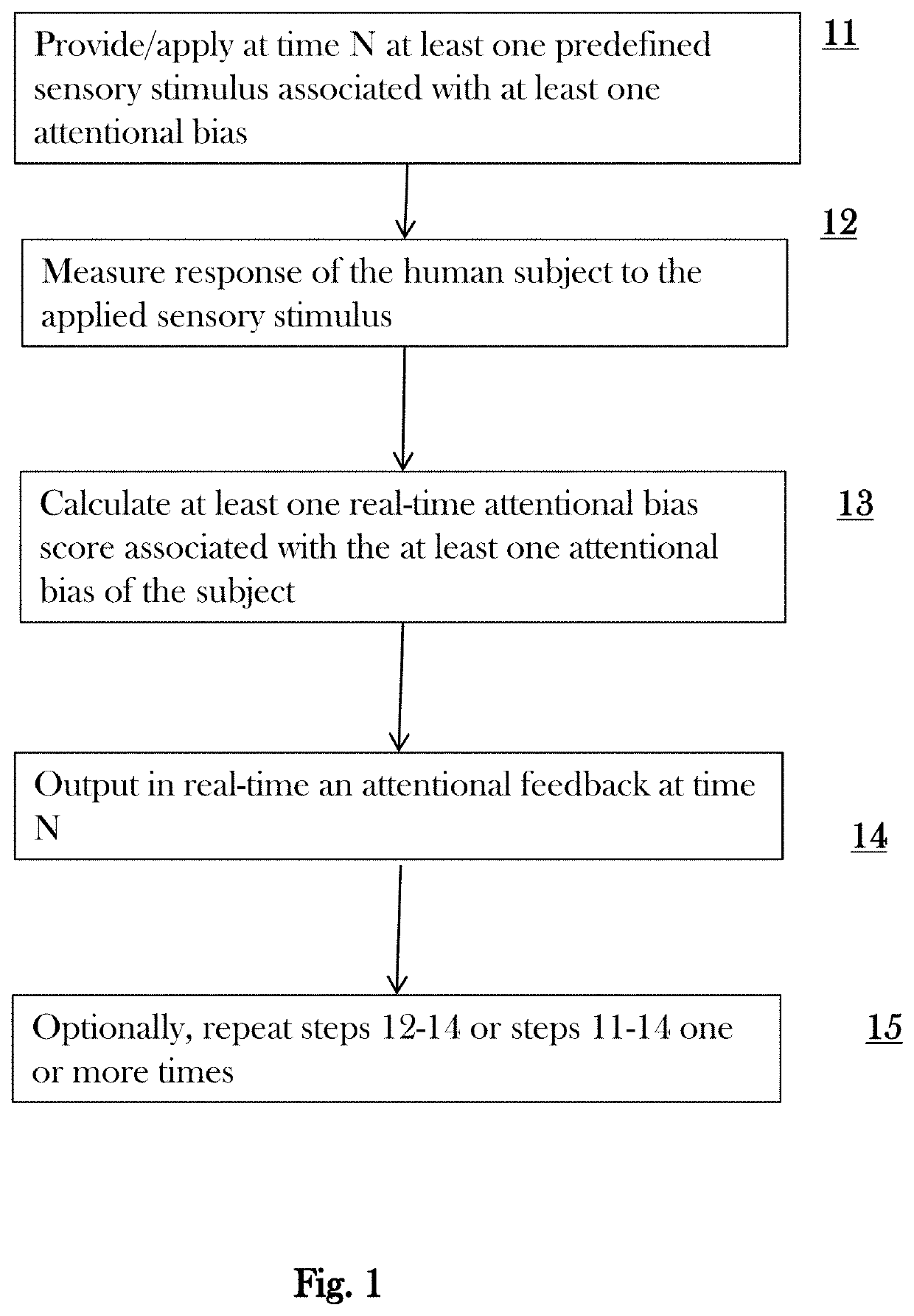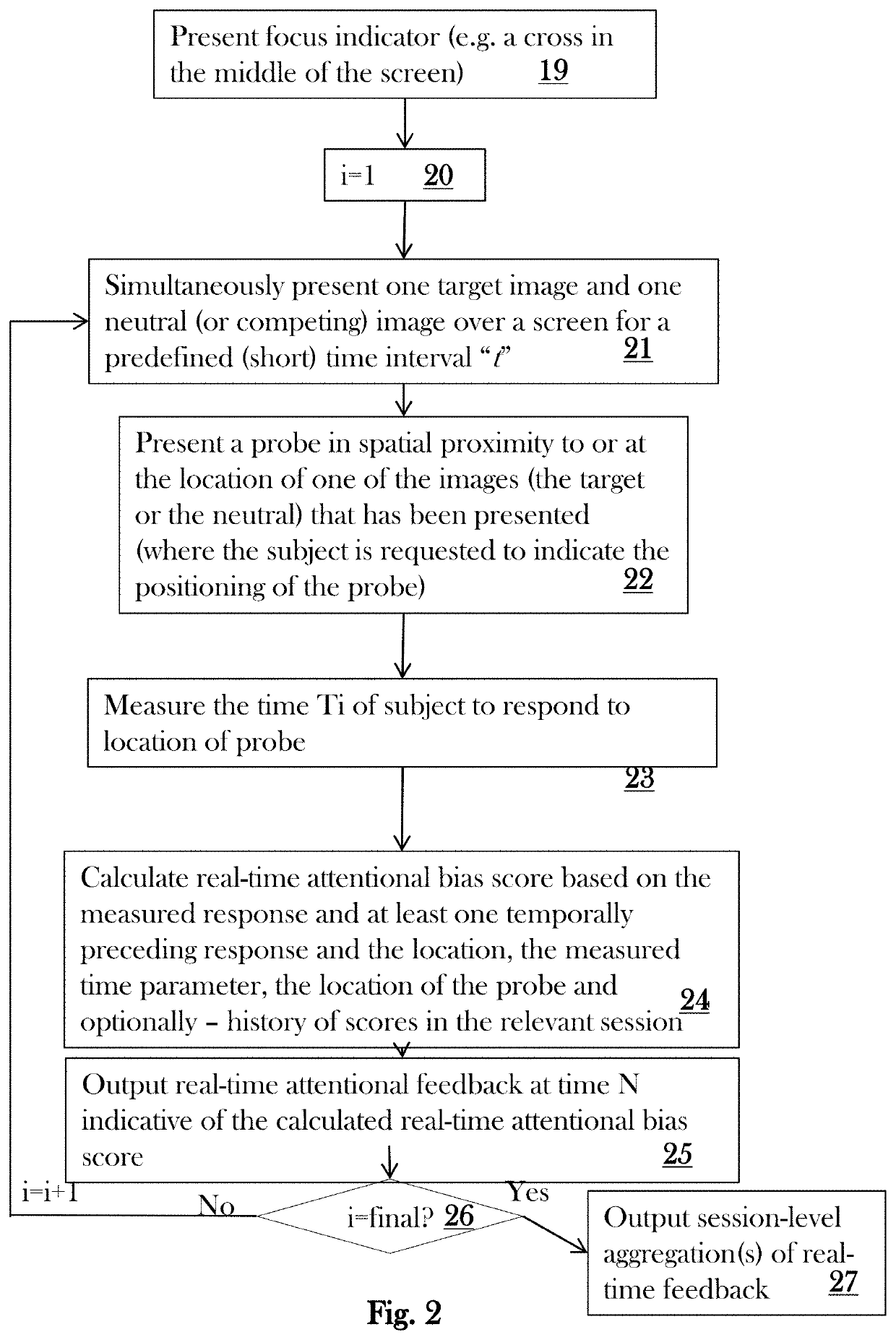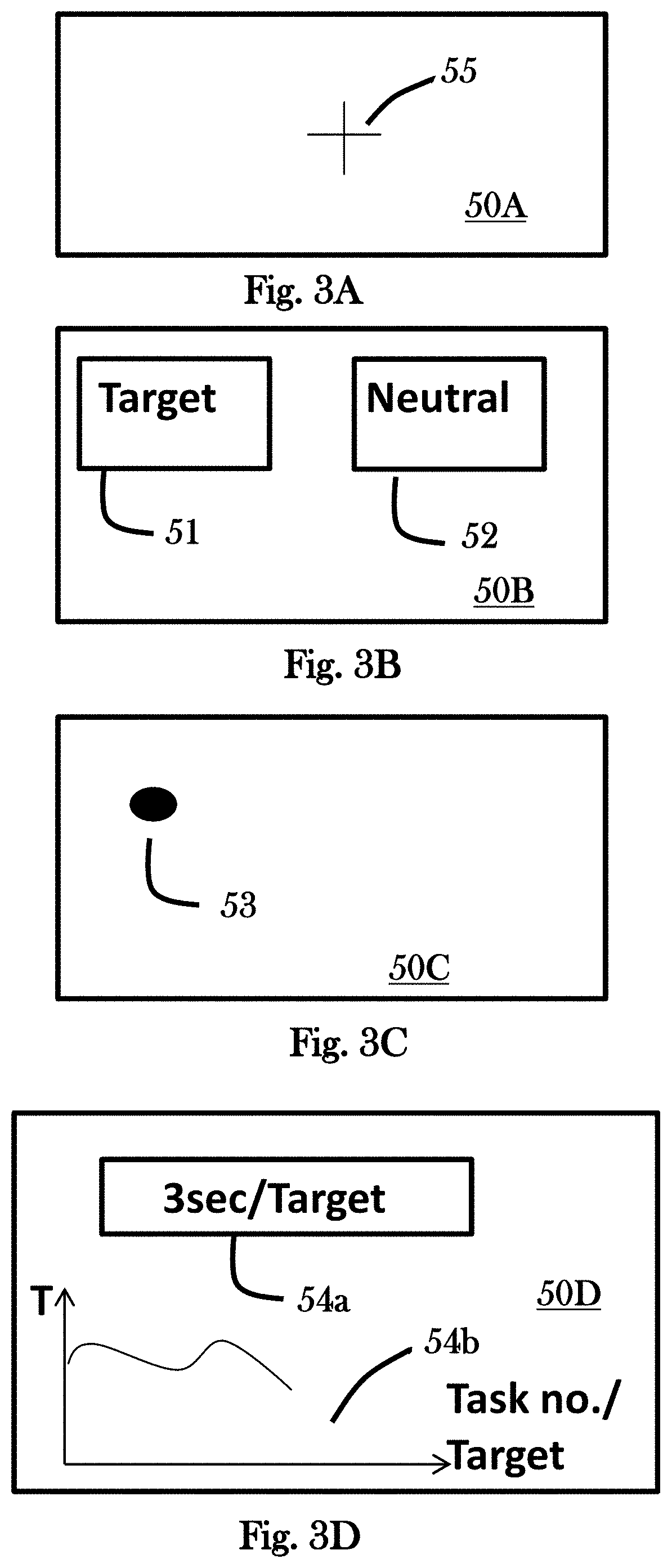System and Method for Monitoring and Training Attention Allocation
a monitoring system and attention allocation technology, applied in the field of systems and methods for monitoring attention allocation of human subjects, can solve the problems of limited knowledge and technology, inability to achieve large-scale, efficient, lasting change in attentional biases for the purpose of reducing the development and maintenance of multiple forms of psychopathology, and inability to achieve cognitive control. the effect of improving the subject's capacity to self-monitoring, achieving cognitive control, and improving subjects' awareness of attentional biases
- Summary
- Abstract
- Description
- Claims
- Application Information
AI Technical Summary
Benefits of technology
Problems solved by technology
Method used
Image
Examples
example 1
el Real-Time Attention Bias Calculations
[0079]We can match and then subtract temporally contiguous pairs of trials, one trial is the target trial at trial (or time) N and we compare and subtract it from its temporally contiguous immediately preceding comparator trial (or time N−1). The target trial is one wherein attentional bias may be observed and for which we need to calculate a trial-level or real-time attention bias score at time N. The comparator trial is the trial, that is the preceding, most temporally contiguous, trial wherein the same response (e.g., reaction time, eye movement, electropohysiologic signal) was measured but wherein no or a different attentional bias could have been observed. For example, the comparator trial (N−1) may be an emotionally neutral trial, or for example in the context of common attentional bias interference schemes that include incongruent and congruent trials or invalid and valid trials or predictive or non-predictive trials, whatever the trial...
example 2
el Real-Time Attention Bias Calculations
[0081]In another instantiation of this calculation approach to estimate trial-level real-time attentional bias, we cannot only compare response (or responses) on a target trial at time / trial N to a temporally contiguous preceding comparator trial but to some “fixed” comparator reference value of the measured response(s) of interest (e.g., such a value may reflect “no bias” or some other comparator value of interest). Then, that fixed comparator reference value is then repeatedly contrasted, at the trial-level in real-time with the response(s) on each target trial.
example 3
el Real-Time Attention Bias Calculations
[0082]In yet another instantiation of this calculation, we can also compare response(s) on a target trial at time / trial N to an updating calculated comparator reference based on multiple comparator trials such as via a running window of responses on multiple temporally contiguous comparator trials for which the response(s) of interest is measured. Thus, for any given target trial N, the temporally contiguous preceding empirical reference or comparator may be the value(s) of the response(s) on an “running” or updating window of trial responses which may produce, for example, a running central tendency statistic(s) (e.g., mean, median) and or statistic(s) of variability (e.g., standard deviation) of responses in that updating window of multiple trails that were temporally contiguous and preceded the target trial N for which we are estimating trial-level real-time attentional bias. In this instantiation of the calculation, the comparator referenc...
PUM
 Login to View More
Login to View More Abstract
Description
Claims
Application Information
 Login to View More
Login to View More - R&D
- Intellectual Property
- Life Sciences
- Materials
- Tech Scout
- Unparalleled Data Quality
- Higher Quality Content
- 60% Fewer Hallucinations
Browse by: Latest US Patents, China's latest patents, Technical Efficacy Thesaurus, Application Domain, Technology Topic, Popular Technical Reports.
© 2025 PatSnap. All rights reserved.Legal|Privacy policy|Modern Slavery Act Transparency Statement|Sitemap|About US| Contact US: help@patsnap.com



